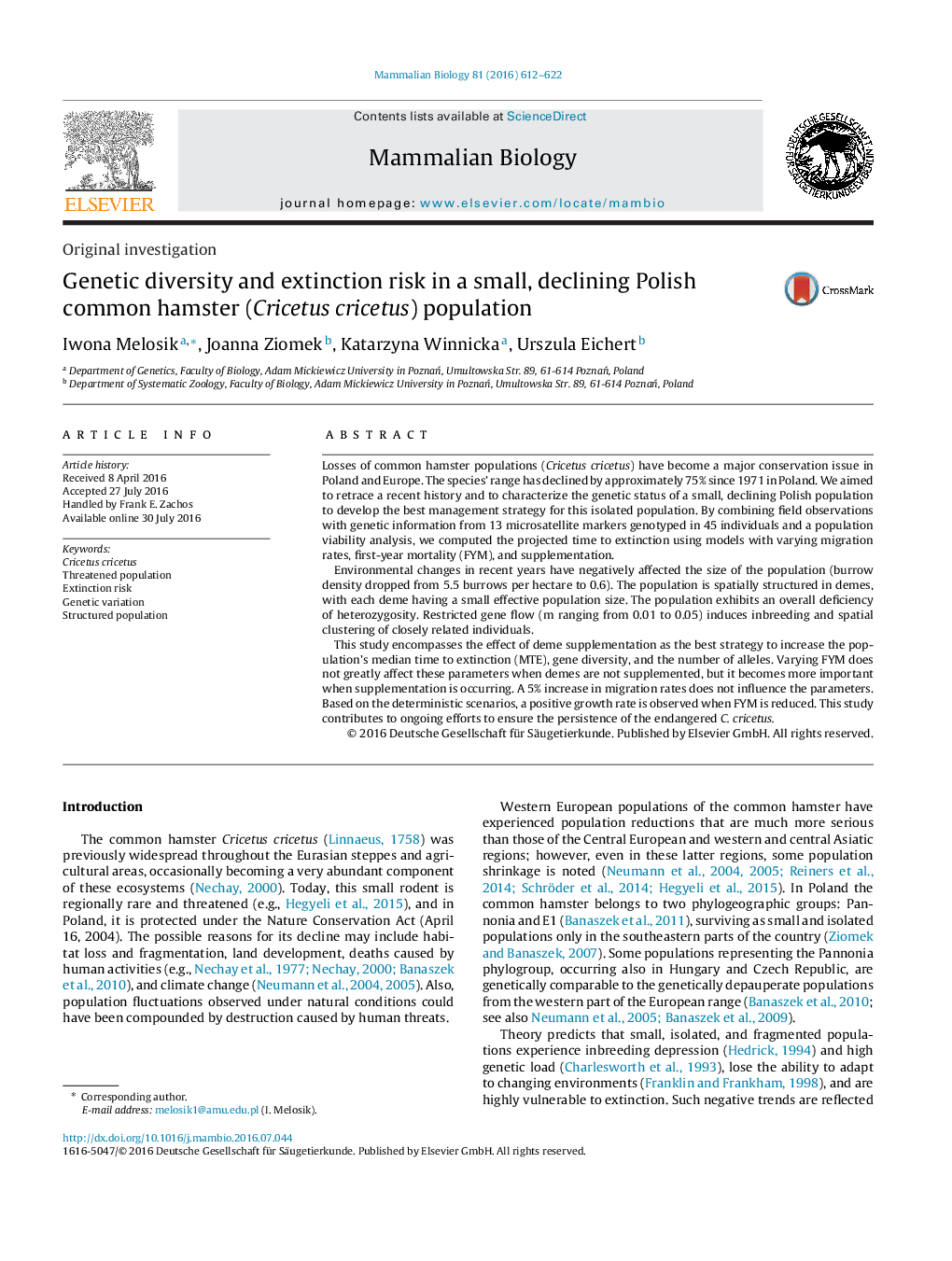| کد مقاله | کد نشریه | سال انتشار | مقاله انگلیسی | نسخه تمام متن |
|---|---|---|---|---|
| 2193281 | 1402142 | 2016 | 11 صفحه PDF | دانلود رایگان |
Losses of common hamster populations (Cricetus cricetus) have become a major conservation issue in Poland and Europe. The species’ range has declined by approximately 75% since 1971 in Poland. We aimed to retrace a recent history and to characterize the genetic status of a small, declining Polish population to develop the best management strategy for this isolated population. By combining field observations with genetic information from 13 microsatellite markers genotyped in 45 individuals and a population viability analysis, we computed the projected time to extinction using models with varying migration rates, first-year mortality (FYM), and supplementation.Environmental changes in recent years have negatively affected the size of the population (burrow density dropped from 5.5 burrows per hectare to 0.6). The population is spatially structured in demes, with each deme having a small effective population size. The population exhibits an overall deficiency of heterozygosity. Restricted gene flow (m ranging from 0.01 to 0.05) induces inbreeding and spatial clustering of closely related individuals.This study encompasses the effect of deme supplementation as the best strategy to increase the population’s median time to extinction (MTE), gene diversity, and the number of alleles. Varying FYM does not greatly affect these parameters when demes are not supplemented, but it becomes more important when supplementation is occurring. A 5% increase in migration rates does not influence the parameters. Based on the deterministic scenarios, a positive growth rate is observed when FYM is reduced. This study contributes to ongoing efforts to ensure the persistence of the endangered C. cricetus.
Journal: Mammalian Biology - Zeitschrift für Säugetierkunde - Volume 81, Issue 6, November 2016, Pages 612–622
